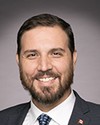Thank you very much for those questions.
To ensure that PHAC or others on the platform do not have access to personal information, we went through a very rigorous process. It actually took years to build the Insights platform to be what we wanted it to be. We realized years ago that there could be tremendous value in this de-identified network mobility data. We're talking about the pings that devices make off of the cell towers as they move about the network. If we could de-identify those pings and just look at the movement patterns, there were a number of “social good” uses that we could immediately see, with tremendous value, and we've seen that borne out during this pandemic.
We consulted with leading de-identification experts and spent a tremendous amount of time building the technical platform and the technical rules to de-identify the data and strip the identifiers, but we went far beyond that to rules around the way the queries are made and controls on the frequency with which queries are made, as well as considerations of geography and aggregation. There were a number of different technical and statistical controls, and then on top of that we put in administrative controls.
I talked earlier about the guided and supervised access. That's another administrative control that we have in place whereby we're actually supervising what is happening on the platform and reviewing what is taken from the platform, as well as strict contractual controls prohibiting reidentification. Those are some of the ways we control and make sure that we have reduced the reidentification risk to a very small risk.
In terms of the privacy by design certification, I'm glad you asked about that. We're really proud of that certification. It is a very rigorous process. Our most recent privacy by design certification for the platform was just before COVID, so it was excellent timing for the launch of Data for Good. It took over four months to conduct. It's conducted by a fully independent external audit group.
There are seven privacy by design principles. Those turn into 30 privacy and security criteria, and then into 94 different controls that are illustrative of our meeting those criteria and principles. It took, as I say, about four months. They complete that report, and then they have to take it to an independent accreditation board to have it independently reviewed before we can be certified.




